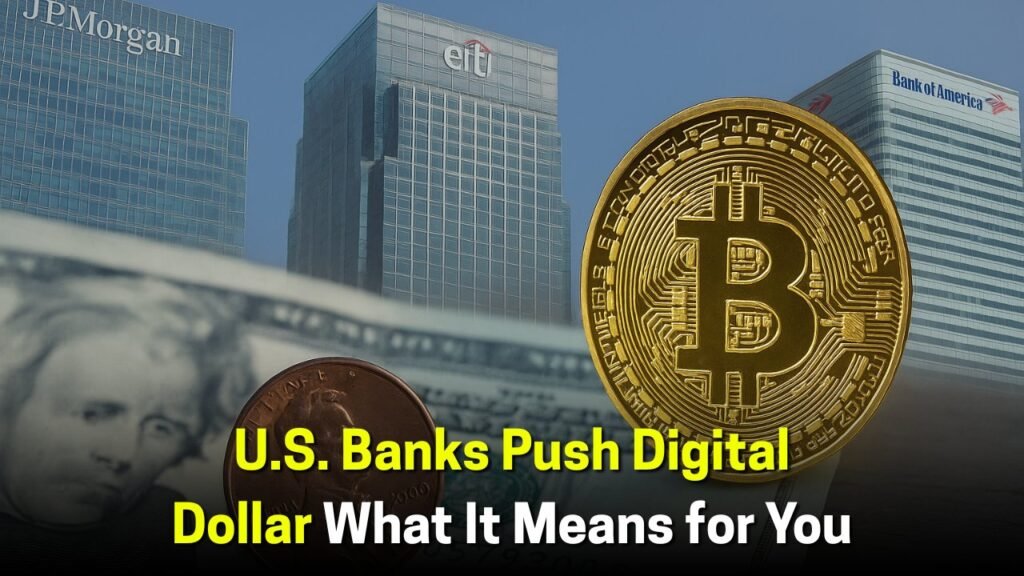From Copper Pennies to Digital Dollars: As the world steadily moves towards a digital economy, the transition from traditional cash transactions to digital payments is becoming more pronounced. This shift is largely being spearheaded by banks and financial institutions, which are leveraging technology to provide faster, safer, and more convenient payment solutions. The adoption of digital currencies and contactless payments is not just a trend but a significant step towards a cashless future. Banks, understanding the changing dynamics and consumer preferences, are leading this transformation by integrating state-of-the-art digital payment infrastructures, thus ensuring a seamless transition for their customers.

How Banks Are Pioneering Cashless Solutions
Banks have always been at the forefront of financial innovation, and their role in promoting a cashless society is no different. By investing in digital infrastructure, banks are creating an ecosystem where cashless transactions become the norm. This includes the development of mobile banking apps that offer features such as mobile deposits, peer-to-peer transfers, and digital wallets. For instance, major banks in the United States have rolled out services like Zelle and Apple Pay integration, allowing customers to send money instantly without handling physical cash. Furthermore, these institutions are collaborating with tech companies to enhance security measures, ensuring that digital transactions are not only convenient but also secure. This partnership has led to the development of advanced encryption and authentication technologies, such as biometric verification, which significantly reduce the risk of fraud. As a result, consumers are gaining confidence in digital transactions, making the move towards a cashless society more feasible than ever.
The Benefits of Transitioning to Digital Dollars
Transitioning from copper pennies to digital dollars offers numerous advantages for both consumers and businesses. For consumers, the convenience of cashless payments means less time spent at checkouts and the ability to track spending more efficiently through digital ledgers. This shift also reduces the need to carry physical cash, which can be lost or stolen. For businesses, going cashless can lead to streamlined operations, as digital transactions often require less manual processing and reduce the risk of human error. Additionally, the data generated from digital transactions can provide valuable insights into consumer behavior, helping businesses tailor their offerings to better meet customer needs. However, the most significant benefit lies in the potential for financial inclusion. Digital currencies can provide unbanked populations with access to financial services, fostering greater economic participation and stability. This is particularly important in rural areas where access to traditional banking infrastructure is limited.
Challenges in the Transition to a Cashless Economy
While the advantages are clear, the journey to a fully cashless economy is not without its challenges. One major hurdle is ensuring that the digital infrastructure is robust enough to handle the increased volume of transactions. Banks and financial institutions must continuously update their systems to prevent outages and protect against cyber threats. Another challenge is the digital divide that exists in many parts of the United States. Not everyone has access to smartphones or reliable internet connections, which are essential for participating in a cashless economy. This digital gap can exacerbate existing inequalities, leaving certain populations behind. Additionally, there is a cultural resistance to abandoning cash, as it has been a trusted medium of exchange for centuries. Educating consumers about the benefits and safety of digital transactions is crucial in overcoming this resistance.
Real-Life Example: The Rise of Contactless Payments During the Pandemic
The COVID-19 pandemic has accelerated the move towards a cashless society, with contactless payments becoming increasingly popular. As people sought to minimize physical contact to reduce the spread of the virus, the use of contactless payment methods surged. For example, many retailers and restaurants across the United States adapted by accepting digital payments through platforms like PayPal and Venmo. Even traditional cash-heavy businesses, such as farmers’ markets, started offering digital payment options to cater to the changing consumer preferences. This real-life example illustrates how external factors can drive the adoption of digital financial solutions and highlights the importance of adaptability in the banking sector. It also underscores the role of banks in facilitating this transition by ensuring that their digital offerings are accessible, secure, and user-friendly, thus paving the way for a more cashless future.




